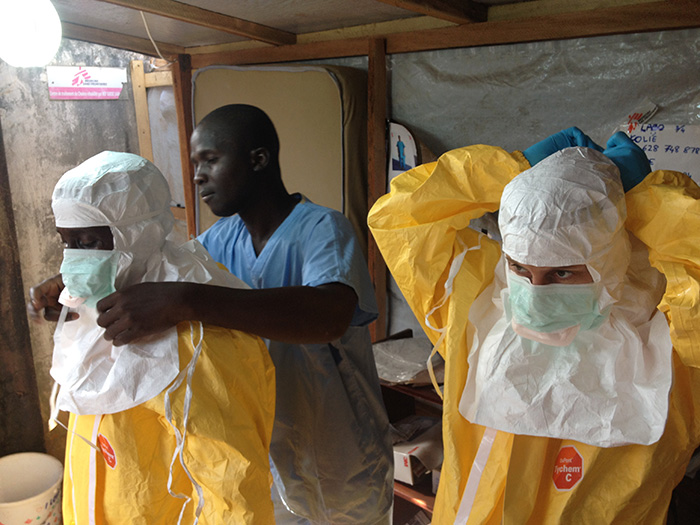ebola-team-c-european-commission-dg-echo.jpg

A medical team during the Ebola outbreak. Credit: European Commission
The bank said the Pandemic Emergency Financing Facility (PEF) will be a fast-disbursing global finance mechanism, accelerating both global and national responses to outbreaks with pandemic potential.
World Bank vice president Jim Yong Kim said that, for the first time, the world will have a system that can move funding and teams to the site of outbreaks before they spin out of control. Pandemics currently posing some of the biggest threats to lives and economies around the world.
All 77 countries eligible for financing from the International Development Association, the World Bank’s fund for the poorest countries, will be eligible to receive PEF coverage, which is expected to be operational later this year.
“This facility addresses a long, collective failure. The Ebola crisis in Guinea, Liberia and Sierra Leone taught all of us that we must be much more vigilant to outbreaks and respond immediately to save lives,” said Kim.
The PEF will consist of an insurance window, a complementary cash window and World Bank-issued pandemic catastrophe bonds.
In the event of an outbreak, the bank said the PEF will release funds quickly to countries and the qualified international responding agencies, while the insurance window will provide coverage of up to $500m for an initial period of three years for outbreaks likely to cause major epidemics.
These include new, pandemic forms of influenza, viruses like SARS or MERS and Ebola. The bank said publicly available data will be used to help identify when the money would be released, based on the size, severity and spread of the outbreak.
The complementary cash window will provide more flexible funding to address a larger set of emerging pathogens that may not yet meet the criteria for the insurance window. Japan has already committed to contribute $50m towards the new initiative and the World Health Organisation and the private sector helped design the facility.
The annual global cost of moderate to severe pandemics is roughly $570bn, or 0.7% of global GDP.
Research has warned that a very severe pandemic, such as a repeat of the 1918 Spanish flu outbreak, could cost almost $4tn.
In the past few years, the Zika virus, the MERS outbreak in South Korea, and the Ebola virus in west Africa have claimed thousands of lives and put severe strain on health infrastructure and on economies.
Guinea, Liberia and Sierra Leone – the three nations worst-hit by the Ebola crisis – saw their economies crippled, costing them an estimated $2.8bn and undid years of development gains.
The way the international community dealt with the outbreak has received heavy criticism, with the WHO in particular slammed for its slow and inadequate response.
Medical charity Médicins Sans Frontiéres, an outspoken critic during the Ebola crisis, has also condemned the global reaction to yellow fever just over a year later.
At the beginning of this month, MSF pulled out of attending the first ever World Humanitarian Summit (WHS), citing the world’s poor response to current outbreaks.













